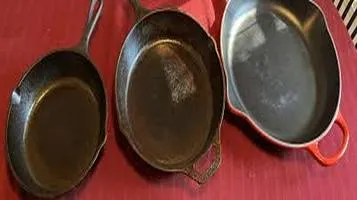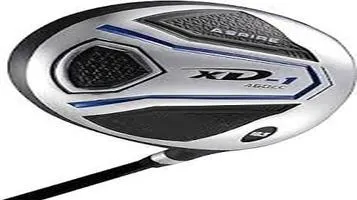The Timeless Appeal of the Cast Iron Skillet
A cast iron skillet is a versatile and durable cooking tool cherished by chefs and home cooks alike. Renowned for its excellent heat retention and even heat distribution, this heavy-duty skillet is ideal for searing, frying, baking, and sautéing. Over time, its naturally non-stick surface develops through seasoning, which enhances flavor and makes it easy to clean. Suitable for use on various heat sources, including stovetops, ovens, and even campfires, the cast iron skillet is perfect for creating a wide range of dishes, from crispy-skinned chicken to golden cornbread. With proper care, including regular seasoning and avoiding harsh detergents, a cast iron skillet can last for generations, making it a timeless and indispensable kitchen staple.

The cast iron skillet is an enduring kitchen essential that has seen a renaissance in recent years. Revered by both professional chefs and home cooks, this versatile piece of cookware offers a unique blend of durability, heat retention, and non-stick capabilities, making it a must-have for any kitchen. Having spent ample time with a high-quality cast iron skillet, I can confidently attest to its myriad benefits and occasional drawbacks, which I will detail in this comprehensive review.
Durability and Longevity
One of the most compelling features of a cast iron skillet is its unparalleled durability. Unlike other types of cookware that may warp, scratch, or degrade over time, cast iron skillets are built to last for generations. This longevity is due to the robust nature of cast iron itself, which, when properly maintained, can withstand years of rigorous use.
My own skillet, a well-seasoned piece passed down from my grandmother, is a testament to this. Despite its age, it remains in excellent condition, thanks to routine seasoning and proper care. This longevity not only makes cast iron skillets a sustainable choice but also a cost-effective one, as you won’t need to replace them frequently.
Heat Retention and Distribution
Cast iron skillets are renowned for their superior heat retention and even heat distribution. These properties make them ideal for a wide range of cooking techniques, from searing steaks to simmering stews and baking cornbread. The skillet’s ability to maintain a consistent temperature is particularly beneficial for achieving a perfect sear on meats, which requires high, even heat.
In my experience, the skillet’s heat retention has significantly improved the quality of my cooking. For instance, when making pan-seared salmon, the cast iron ensures a beautifully crispy skin while keeping the interior moist and tender. Additionally, the even heat distribution prevents hot spots and ensures that food cooks uniformly, which is crucial for recipes that require precise temperature control.
Non-Stick Capabilities
A well-seasoned cast iron skillet boasts impressive non-stick properties, rivaling those of contemporary non-stick pans. The seasoning process involves applying a thin layer of oil to the skillet’s surface and heating it to create a natural, non-stick coating. Over time, this coating becomes more effective, allowing for easy food release and simplified cleanup.
In my kitchen, I’ve used the skillet for notoriously sticky foods like fried eggs and pancakes, and the results have been consistently excellent. The food releases effortlessly, and cleanup is a breeze, requiring just a gentle scrub with a brush and hot water. The non-stick surface also means I can use less oil or butter in my cooking, contributing to healthier meals.
Versatility
The versatility of a cast iron skillet is truly remarkable. It can transition seamlessly from stovetop to oven, making it suitable for a wide array of dishes. Whether you’re braising short ribs, baking a frittata, or even roasting vegetables, the cast iron skillet can handle it all. Its ability to withstand high temperatures also means it’s perfect for baking, allowing you to create beautifully browned and crispy crusts.
I’ve found the skillet to be indispensable for one-pan meals, which simplifies both cooking and cleanup. For example, I can start by browning chicken thighs on the stovetop, then add vegetables and broth before transferring the skillet to the oven to finish cooking. This versatility not only saves time but also enhances the flavors, as the fond (caramelized bits) left in the pan contribute to a richer, more complex taste.
Drawbacks and Considerations
Despite its many advantages, the cast iron skillet is not without its drawbacks. One of the most notable is its weight. Cast iron skillets are significantly heavier than their stainless steel or non-stick counterparts, which can make them cumbersome to handle, especially for those with limited strength or mobility. Additionally, the skillet’s handle can become extremely hot during cooking, necessitating the use of oven mitts or handle covers to prevent burns.
Another consideration is the maintenance required to keep a cast iron skillet in optimal condition. Unlike other types of cookware that can be tossed into the dishwasher, cast iron skillets require hand-washing and regular seasoning to maintain their non-stick surface and prevent rust. This extra care can be a deterrent for some, but I’ve found that the benefits far outweigh the effort involved.
Conclusion
The cast iron skillet is a timeless piece of cookware that offers exceptional durability, heat retention, and versatility. While it does require some maintenance and can be heavy to handle, its many advantages make it a worthy investment for any kitchen. Whether you’re a seasoned chef or a home cook looking to elevate your culinary skills, a cast iron skillet is an invaluable tool that will serve you well for years to come.






